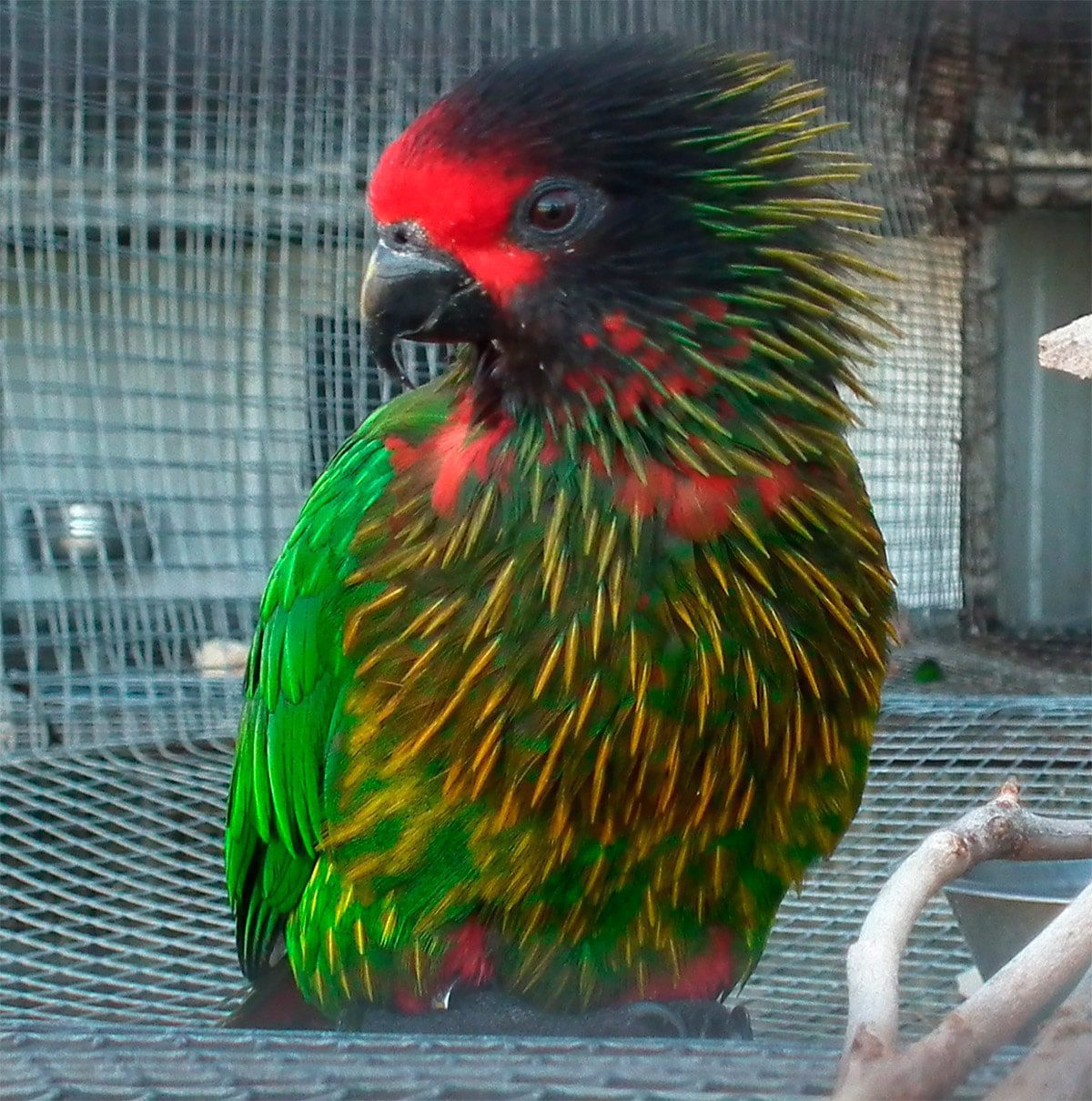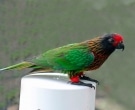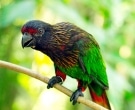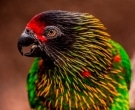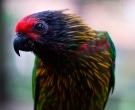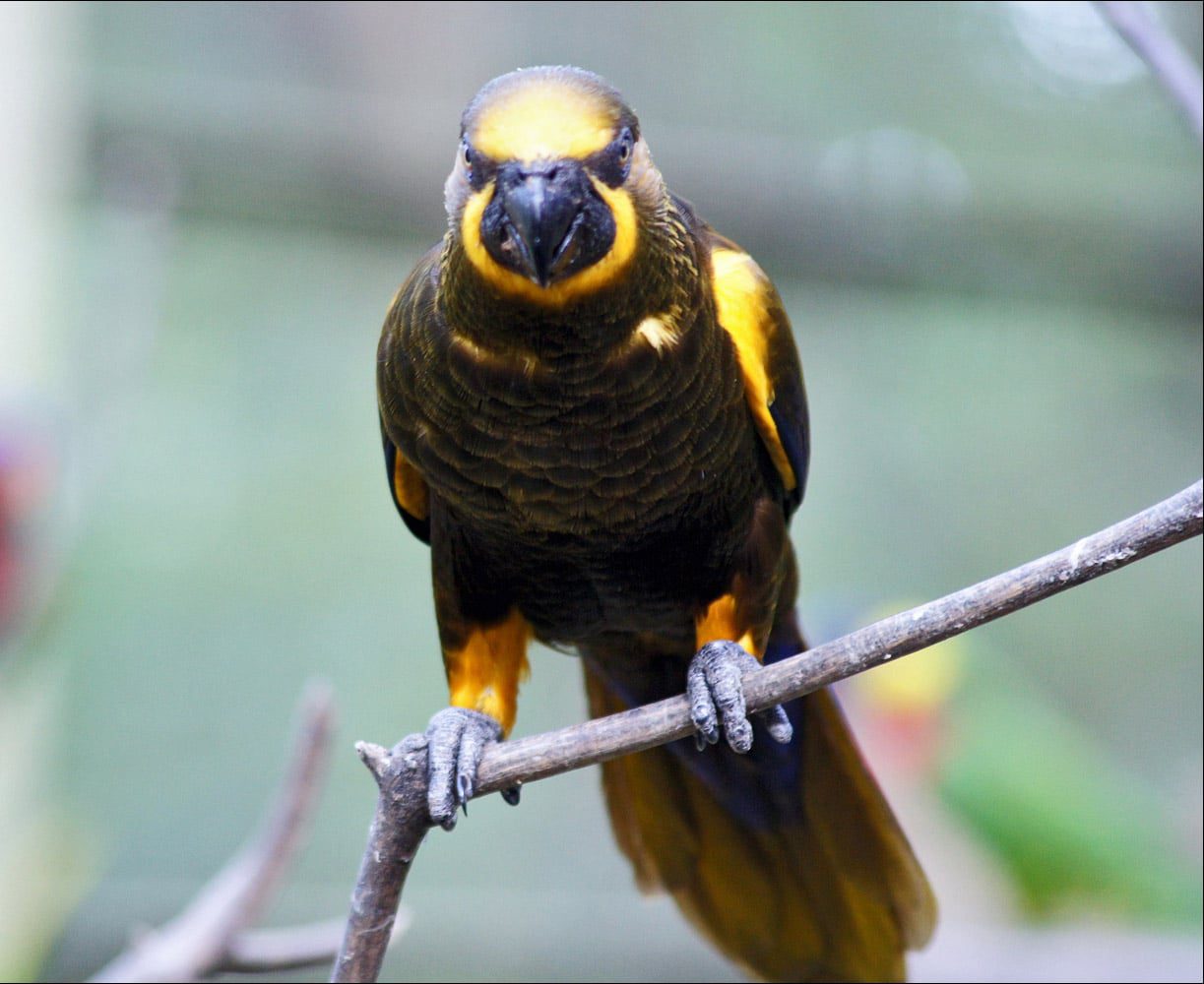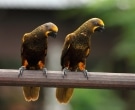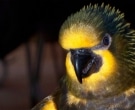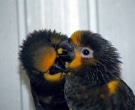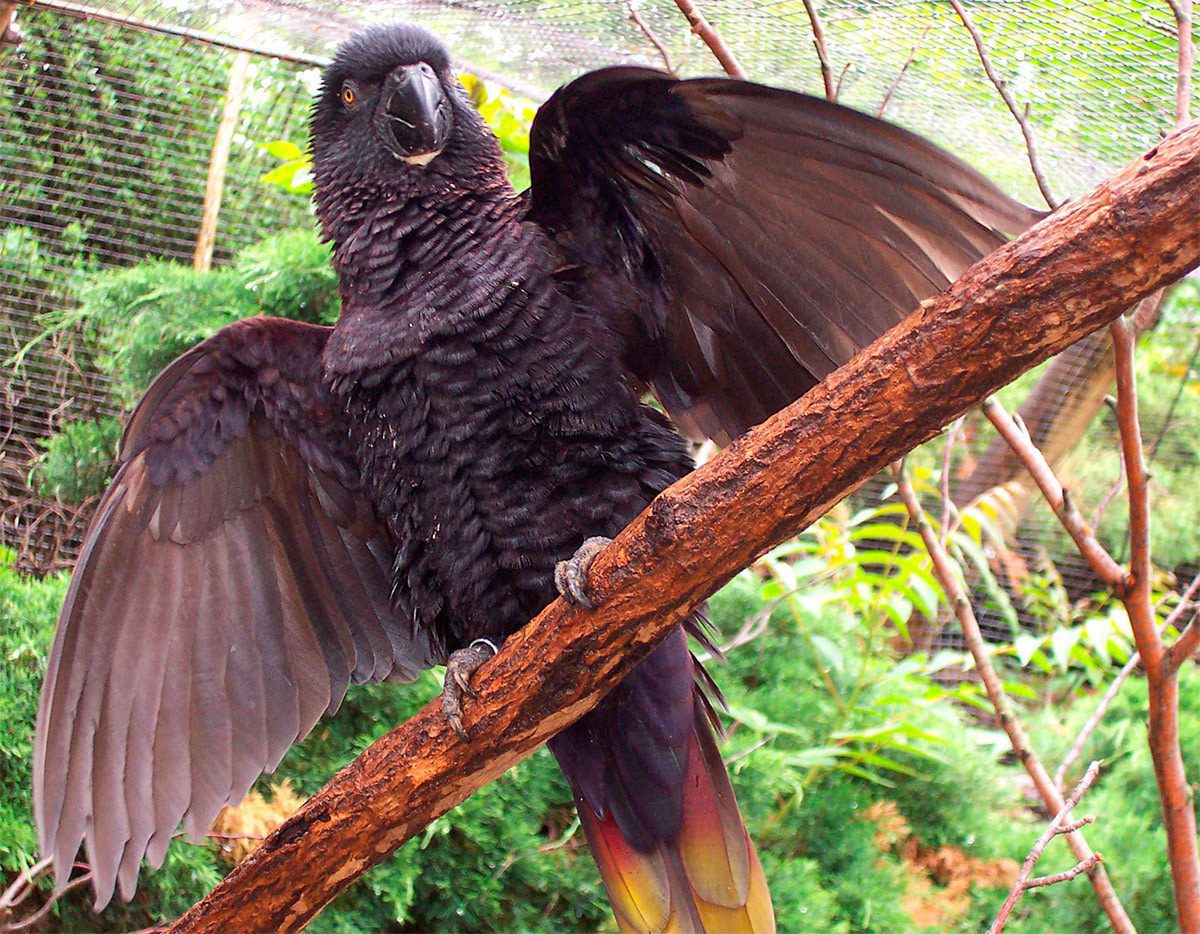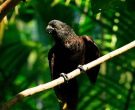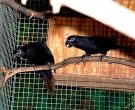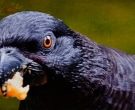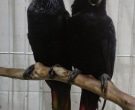Content |
|---|
Description
Measured between 30 to 31 cm.. and a weight between 180 and 245 gr.
The adults of the species Yellow-streaked Lory (Chalcopsitta scintillata) have plumage dark green, pale green veins in head and the abdomen, and bright yellow bands in the chest and in the the mantle.

The forecrown, cheeks and the thighs are bright red. The sides of the chest with large red infiltrations.
The under wing It is crossed by a thick yellow band. The bill is black. Bare skin eye and at the base of bill is dark gray. The irises are orange-red, the legs grey.
There is no sexual dimorphism, but in the female, the front spot It is less pronounced.
The immature They resemble adults, but have less red in the forecrown. The basis of the bill It is less stained yellow. The irises They are brown.
They are particularly visible in the early hours of the day, When the bands fly over canopy, sometimes very large heights.
They have a direct flight with rapid wing beats. In spite of this, they give the impression of moving slowly, almost in a hesitant way. Its neck tense and the tail feathers widely deployed gives them a vision in flight that is very characteristic. Couples often engage in stunts, with many screams.
- Sound of the Yellow-streaked Lory.
Description 3 subspecies
-
Chalcopsitta scintillata chloroptera
(Salvadori, 1876) – Adults of this subspecies differ little from those of the nominal species. But, they differ from the latter by the narrower stripes on the plumage. The bottom of your wings They are green or green with red markings.
-
Chalcopsitta scintillata rubrifrons
(Gray,GR, 1858) – In this subspecies, both adults and juveniles, they are identical to the nominal species, but the veins of body plumage They are more spacious and orange-yellow.
-
Chalcopsitta scintillata scintillata
(Temminck, 1835) – Nominal.
Habitat:
common in the lowlands, in the Savanna They are covering the hills, in plantations cocoteros and in the mangroves.
They are also in the primary forest and secondary adjacent, even in narrow bands of gallery forests bordering rivers in open country.
Occasionally, the Yellow-streaked Lory They sit near or inside Gardens in local villages.
They can fly to 800 m above sea level.
Reproduction:
Typically install their nests in treeholes high. There is not much information about the reproduction in the center of nature.
In captivity, the implementation is of 2 eggs which both parents incubate alternately during 26 days. At hatching, hatchlings weigh 7 u 8 g.. Duration reproductive cycle It is very long and can overcome 80 days. Despite this, There may be a second clutch in the season.
Food:
They feed in the trees.
consume nectar, pollen and fruit. Are said to some insects complete this predominantly vegetarian diet.
Distribution:
Size of its range (breeding/resident): 586.000 km2
These birds are endemic to the Islas Aru and South of Papua New Guinea.
Distribution 3 subspecies
-
Chalcopsitta scintillata chloroptera
(Salvadori, 1876) – High of the fly river to Southeast Papua New Guinea.
-
Chalcopsitta scintillata rubrifrons
-
Chalcopsitta scintillata scintillata
(Temminck, 1835) – Nominal. South of New Guinea (triton bay to lower fly river.
Conservation:
• Current IUCN Red List category: Least concern.
• Population trend: Stable.
It is not an endangered species. In a study in Southeast New Guinea, its density was estimated at 20 birds per square kilometer.
Its world population approaches the 100.000 birds.
The population suspected to be stable in the absence of evidence of any reduction or substantial threats.
"Yellow-streaked Lory" in captivity:
Pretty common.
They are birds very noisy People who like to let their loud cries are heard. They are playful, they have no fear and they can easily become meek in the hands of your caregiver. They are not only extremely aggressive against other Yellow-streaked Lory, also as with other species.
Alternative names:
– Yellow-streaked Lory, Greater Streaked Lory, Streaked Lory, Yellow streaked Lory, Yellowish-streaked Lory (ingles).
– Lori flamméché, Lori à front jaune, Lori à front rouge, Lori strié (French).
– Schimmerlori (German).
– Lóris-listrado-amarelo (Portuguese).
– Lori Chispeado (español).
scientific classification:
– Order: Psittaciformes
– Family: Psittaculidae
– Genus: Chalcopsitta
– Scientific name: Chalcopsitta scintillata
– Citation: (Temminck, 1835)
– Protonimo: Psittacus sintillatus
Images “Yellow-streaked Lory”:
Videos "Yellow-streaked Lory"
————————————————————————————————-
“Yellow-streaked Lory” (Chalcopsitta scintillata)
Sources:
– Avibase, Oiseaux.NET
– Photos:
– Wikipedia
– Goura (zoochat.com)
– loryland.NET
– Wikimedia
– Wikipedia
– Chalcopsitta rubrifrons = Chalcopsitta sintillata rubrifrons by Joseph Wolf [Public domain], via Wikimedia Commons
– Sounds: BAS van Balen (Xeno-canto)
